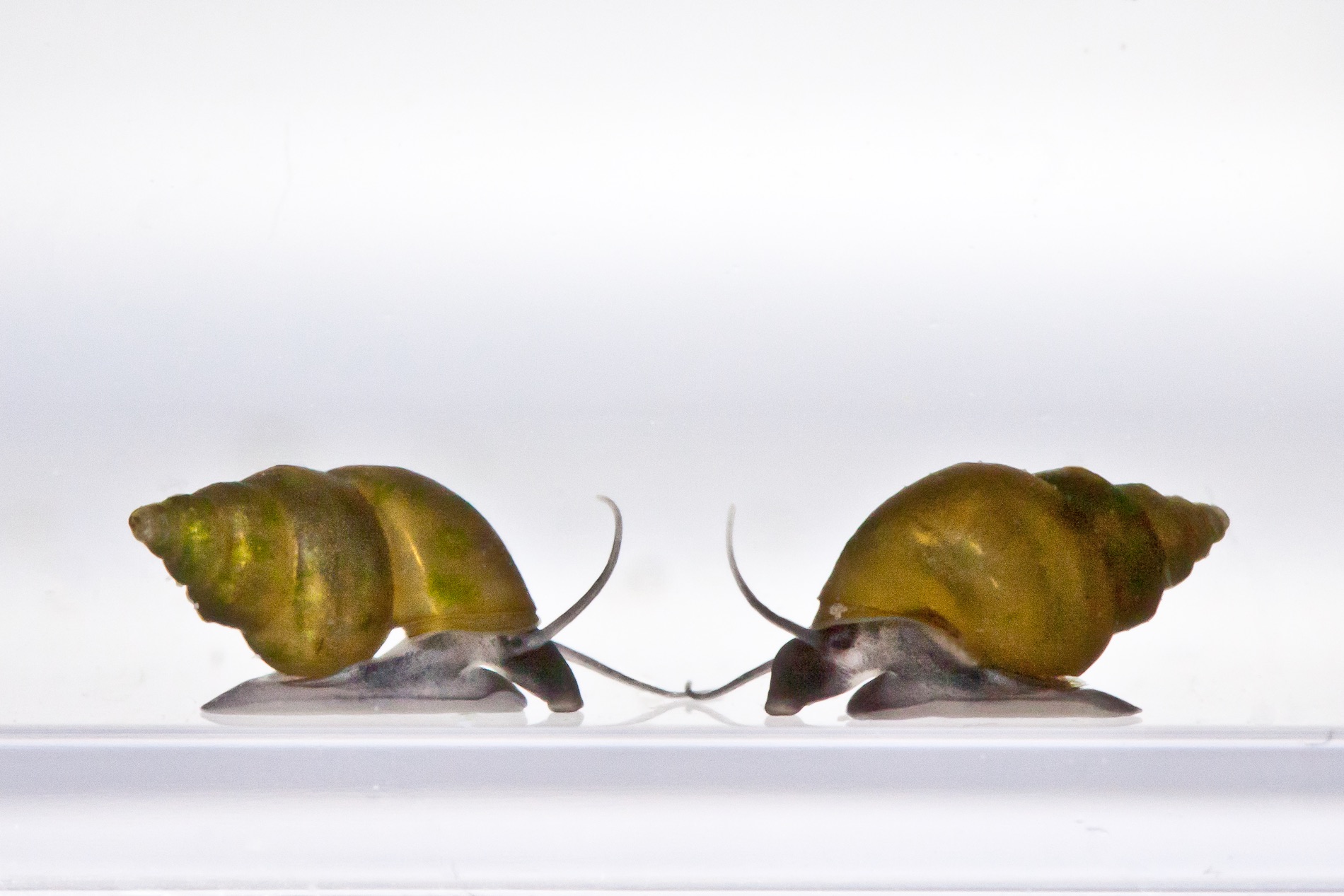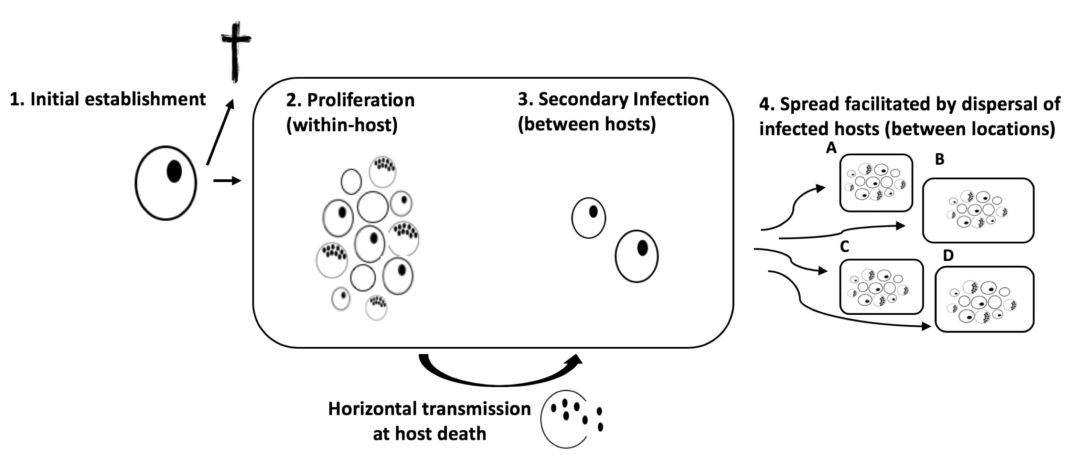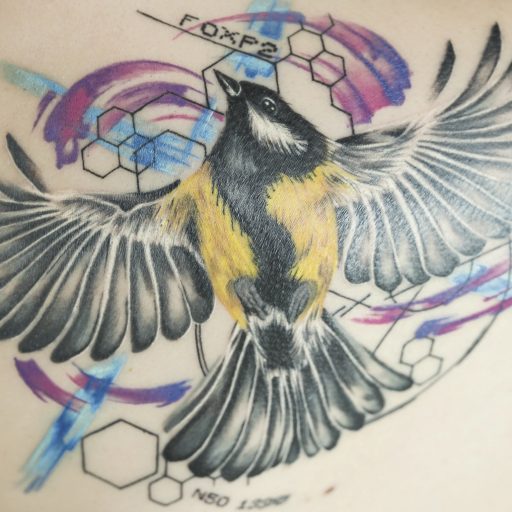Evolution Letters is celebrating its first birthday and so we asked the editorial board to think about some of their favourite papers from the first year. It was always the aim of the journal, and the two societies that founded it, to promote the best research in Evolutionary Biology. We think the papers we’ve picked do a great job of demonstrating that we are in a golden age of evolutionary research.
The two-fold cost of sex: experimental evidence from a natural system
Amanda Gibson, Lynda Delph, & Curtis Lively (published 3rd May 2017)

Chosen by Katrina Lythgoe
This paper is a particular favourite of mine, and not only because it was the first ever paper to be published in Evolution Letters. Why sexual reproduction is so common in nature, despite the so-called “two-fold cost of males”, is one of the most iconic questions in evolutionary biology. Although the hunt for advantages to sex has received huge amounts of attention, the cost of males had never been directly demonstrated in natural systems. By rearing aquatic snails from natural populations, where sexual and asexual females co-exist, Gibson and colleagues were able to demonstrate that a cost of sex does exist, thus underpinning perhaps the most famous conundrum in evolutionary biology.
No evidence for maintenance of a sympatric Heliconius species barrier by chromosomal inversions
John Davey, Sarah Barker, Pasi Rastas, Ana Pinharanda, Simon Martin, Richard Durbin, W. Owen McMillan, Richard Merrill, & Chris Jiggins (published 14th June 2017)

Chosen by Jon Slate
At face value this paper looks like a bit of a null result – the authors find that inversions are not responsible for gene flow barriers between two Heliconius butterfly species. What is impressive about the paper is the amount of rigour and care that has gone into testing for inversions. Small inversions are hard to detect, and so it took absolute ‘gold standard’ linkage mapping and genome assembly to reliably test whether or not they were present. The observation that inversions were not important in this system makes a nice counter-example to the many recent examples where inversions have played an important role in adaptation.
Superior stimulation of female fecundity by subordinate males provides a mechanism for telegony
Sonia Pascoal, Benjamin Jarrett, Emma Evans, & Rebecca Kilner (published 17th March 2018)

Chosen by Andy Gardner
This is a thought-provoking experimental study of fecundity stimulation in burying beetles. When a female mates with multiple males, her mates may employ various strategies to increase how many of her offspring they each get to father. Pascoal et al found that smaller males are particularly adept at stimulating females to produce more offspring and, because this involves stretching a fixed amount of resources over a more numerous brood, the offspring end up smaller as a result. Interestingly, the effect extends to the offspring that the female produces with other, larger, males, so that their progeny also end up more numerous and smaller. Accordingly, this appears to provide a mechanism for ‘telegony’, the Aristotelian idea that individuals could inherit the characteristics of their mothers’ mates in addition to their own fathers.
Male‐biased gene expression resolves sexual conflict through the evolution of sex‐specific genetic architecture
Alison Wright, Matteo Fumagalli, Christopher Cooney, Natasha Bloch, Filipe Vieira, Severine Buechel, Niclas Kolm, & Judith Mank (published 10th Feb 2018)

Chosen by Stephen Wright
This study integrates population genomic patterns with expression data in guppies to address the long-standing question of the extent to which sexually antagonistic alleles are maintained through balancing selection in natural populations.
See also our author interview with Alison Wright on the Evolution Letters blog.
Egg chemoattractants moderate intraspecific sperm competition
Rowan Lymbery, Jason Kennington, & Jonathan Evans (published 28th Nov 2017)

Chosen by Nicola Hemmings
This study revealed how female mechanisms can mediate the outcome of sperm competition through selective modification of sperm function in broadcast spawning mussels. The neat experimental design, which used a fluorescent labelling technique to track the fate of sperm in real-time, showed that chemicals released by eggs are better at attracting sperm from genetically compatible males, resulting in higher fertilisation success for “preferred” males. The paper provides new insight into the mechanistic basis of sperm-egg interactions, and demonstrates the importance of genetic compatibility in dictating the outcome of post-copulatory sexual selection.
See also our author interview with Rowan Lymbery on the Evolution Letters blog.
Unconscious selection drove seed enlargement in vegetable crops
Thomas Kluyver, Glynis Jones, Benoît Pujol, Christopher Bennett, Emily Mockford, Michael Charles, Mark Rees, & Colin Osborne (published 9 May 2017)

Chosen by Anne Charmantier
This original manuscript tackles the question of whether ancient peoples were knowingly domesticating crops, by investigating the impact of domestication on vegetable seed size, which should not be directly affected by selective breeding but can evolve over time due to indirect effects of natural selection acting on genetically correlated characters, such as plant size. While this idea seems simple and straightforward, this is the first time that the question is addressed in this way. The study demonstrates that seed size enlargement in domesticated species indeed appears to have occurred not by deliberate breeding, but through natural selection – either unconsciously or as a result of pleiotropy/linkage with genes for other traits.
See also our author interview with Colin Osborne on the Evolution Letters blog.
Genetic differences between willow warbler migratory phenotypes are few and cluster in large haplotype blocks
Max Lundberg, Miriam Liedvogel, Keith Larson, Hanna Sigeman, Mats Grahn, Anthony Wright, Susanne Åkesson, & Staffan Bensch (published 16th June 2017)

Chosen by Jon Slate
Genomics tools have been promising to unravel the genetic secrets of avian migration for some time, and this paper really delivers. Willow warblers spend summers around the Baltic Sea but in winter they migrate to West Africa or to South and East Africa. Here the authors show that the migration route is determined by a genetic polymorphism associated with just three regions of the genome. Each region is in an area of low recombination containing at least 50 genes, perhaps indicative of inversion polymorphisms. Thus, while only three loci are involved, there may be numerous genes within each locus acting as ‘supergenes’.
Environmental variation causes different (co) evolutionary routes to the same adaptive destination across parasite populations
Stuart Auld & June Brand (published 17th October 2017)

Chosen by Rhonda Snook
The paper tackles a significant evolutionary question – the predictability of host/parasite (co) evolutionary dynamics. The authors employed an experimental design that dealt with a common problem in studies of natural populations, of confounding factors that limit the ability to answer the question. The results showed that whether parasites adapted to the common host, as is classically predicted, depended on environmental variation, revealing more complex dynamics of evolutionary trajectories between hosts and parasites.
Strong hybrid male incompatibilities impede the spread of a selfish chromosome between populations of a fly
Rudi Verspoor, Jack Smith, Natasha Mannion, Gregory Hurst, Tom Price (published 10th May 2018)

Chosen by Stephen Wright
Why do selfish genetic elements show localized geographic distributions when they should be able to spread rapidly through the landscape? This study documents the nature of a strong effect of genetic background on fitness that prevents the wider spread of a meiotic drive allele in Drosophila subobscura, highlighting the potential importance of meiotic drivers in the process of reproductive isolation.
Horizontal gene cluster transfer increased hallucinogenic mushroom diversity
Hannah Reynolds, Vinod Vijayakumar, Emile Gluck‐Thaler, Hailee Brynn Korotkin, Patrick Brandon Matheny, Jason Slot (published 27th Feb 2018)

Chosen by Jon Slate
“Magic” mushrooms produce the hallucinogen psilocybin, a trait that has possibly evolved to manipulate the behaviour of symbiotic invertebrates. Several phylogenetically distinct fungi produce psilocybin, and here the authors used genome sequencing and assembly to present evidence that horizontal gene transfer mediated the independent evolution of this trait.
All our papers are freely available to read and download from the Evolution Letters website. Find out more about publishing with us here.

